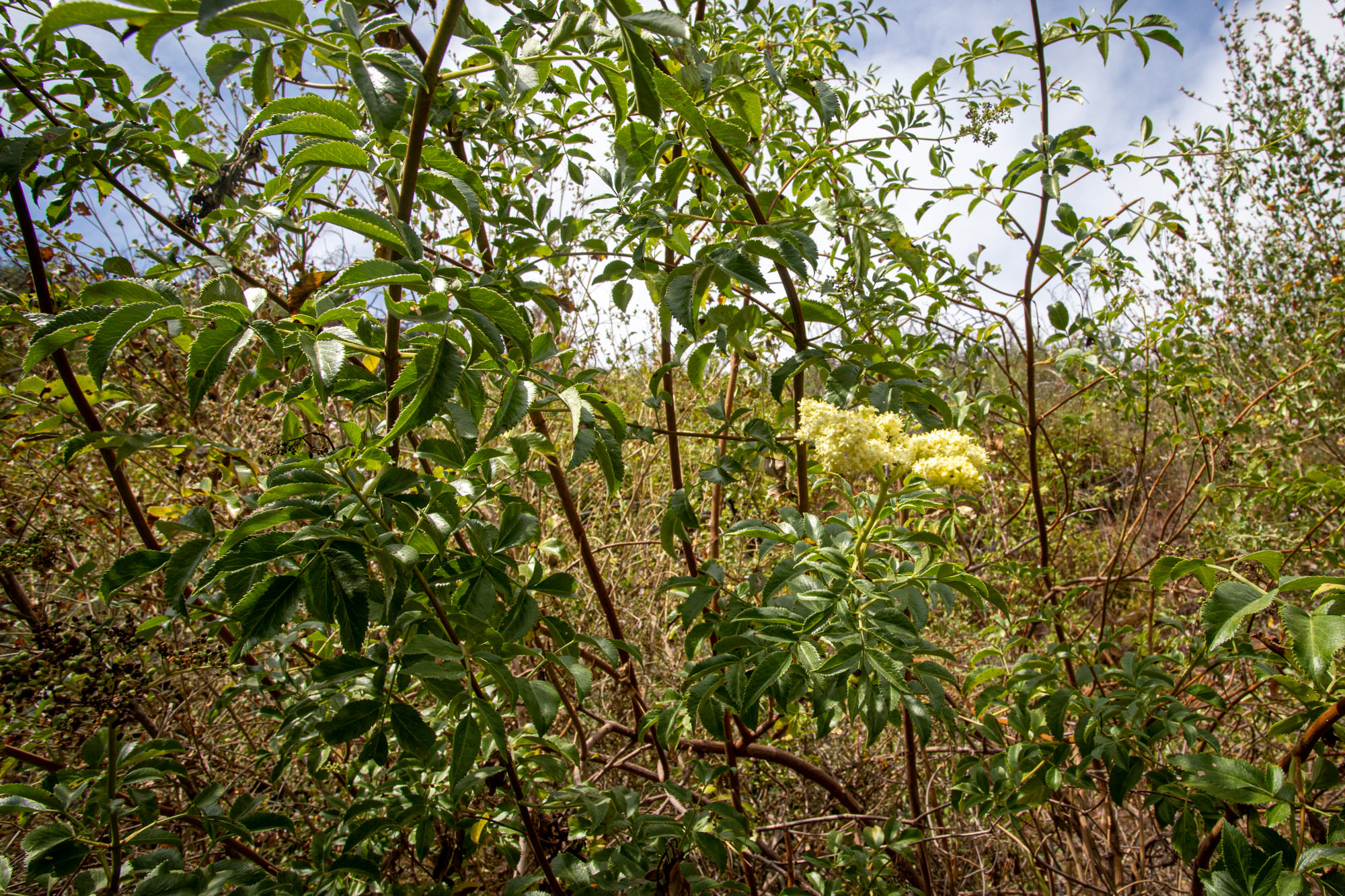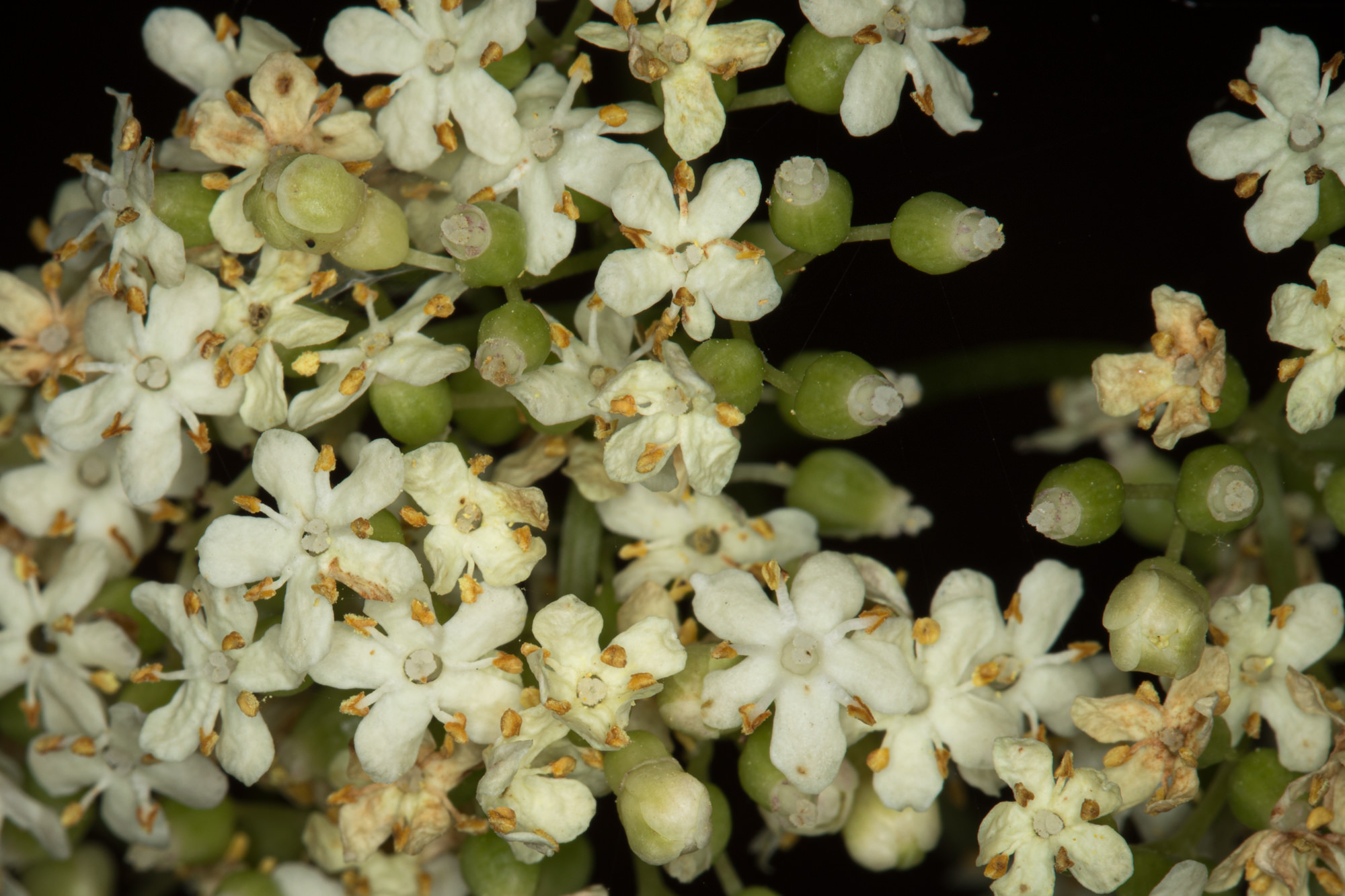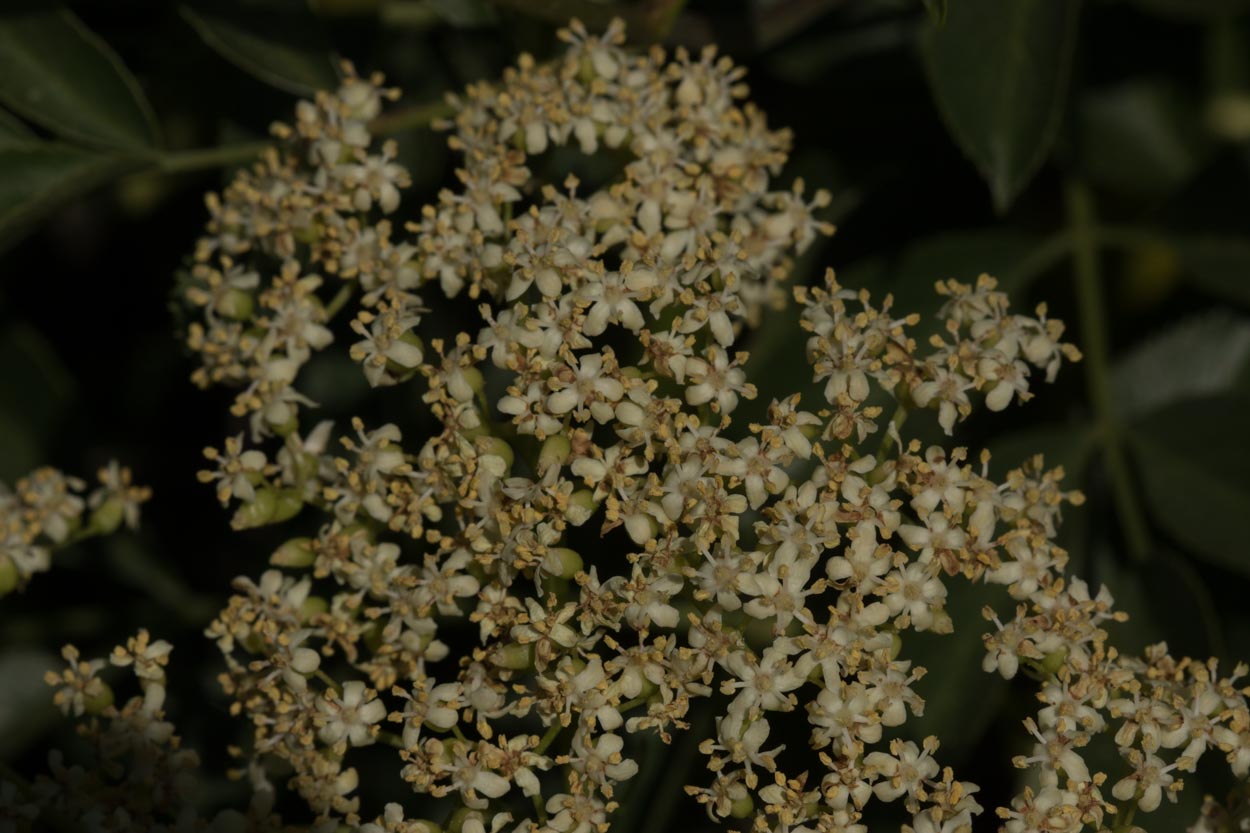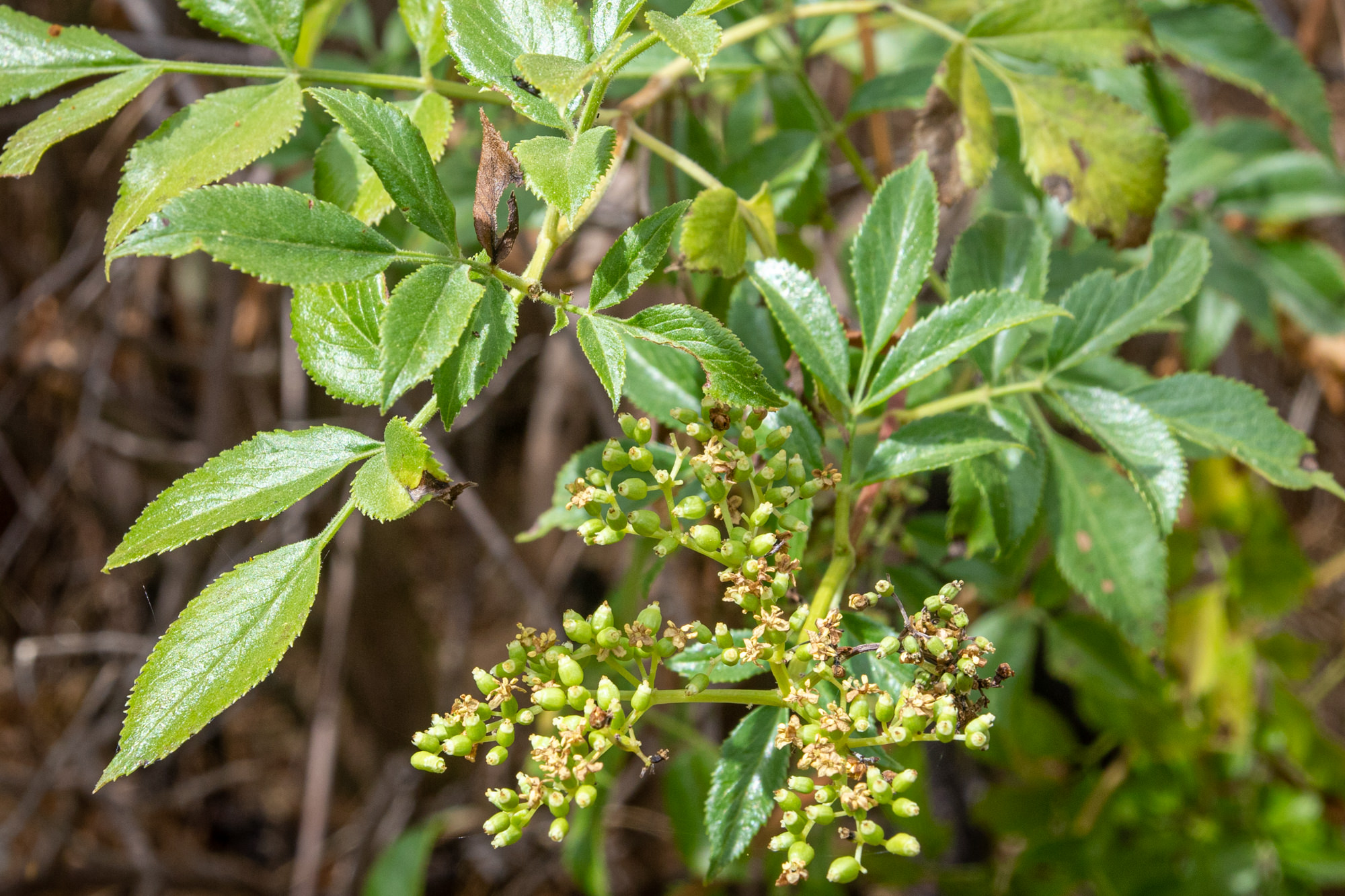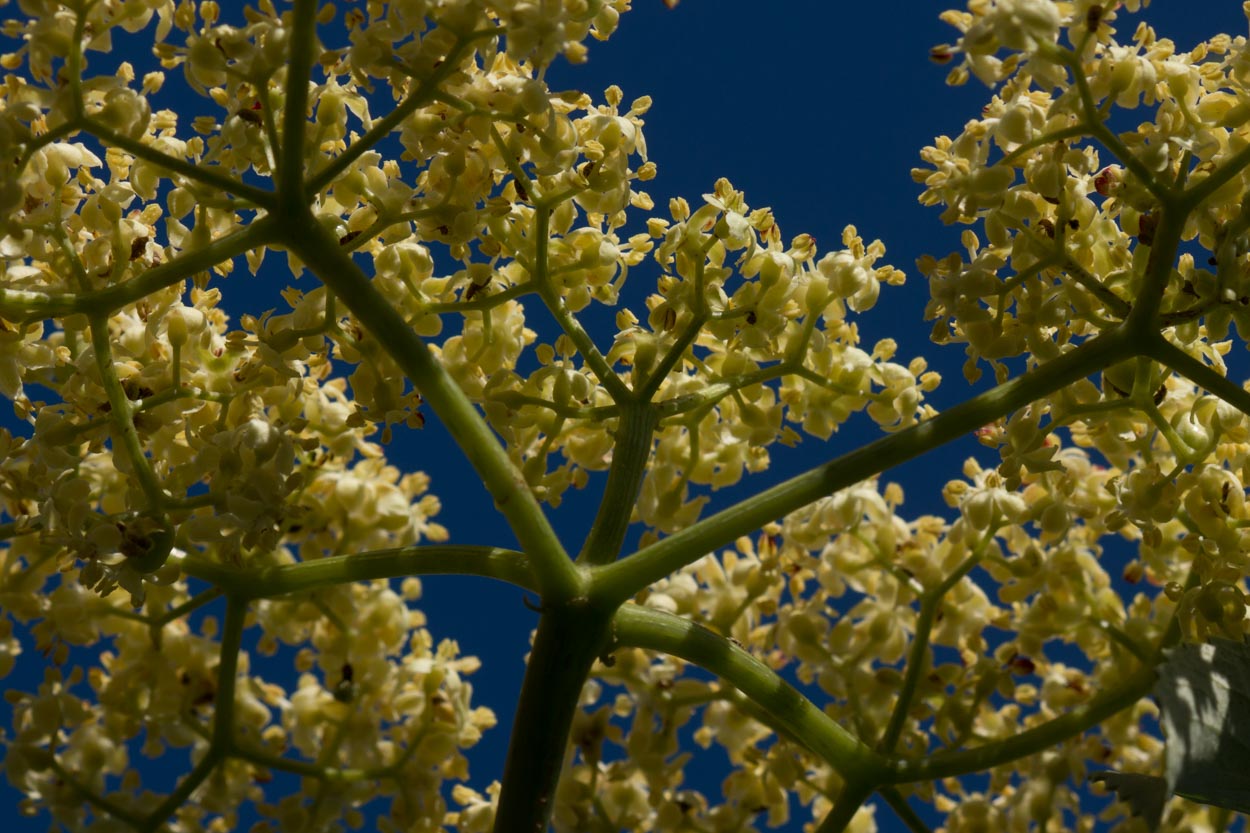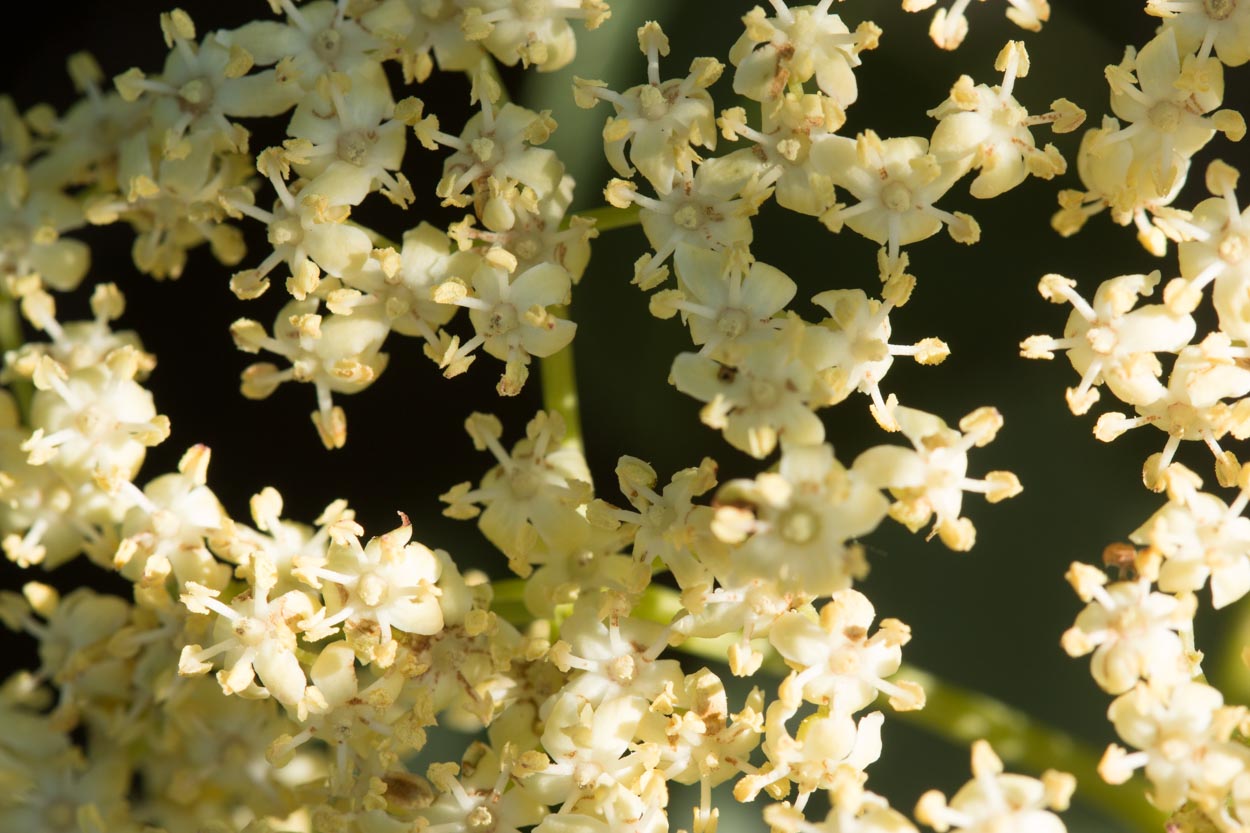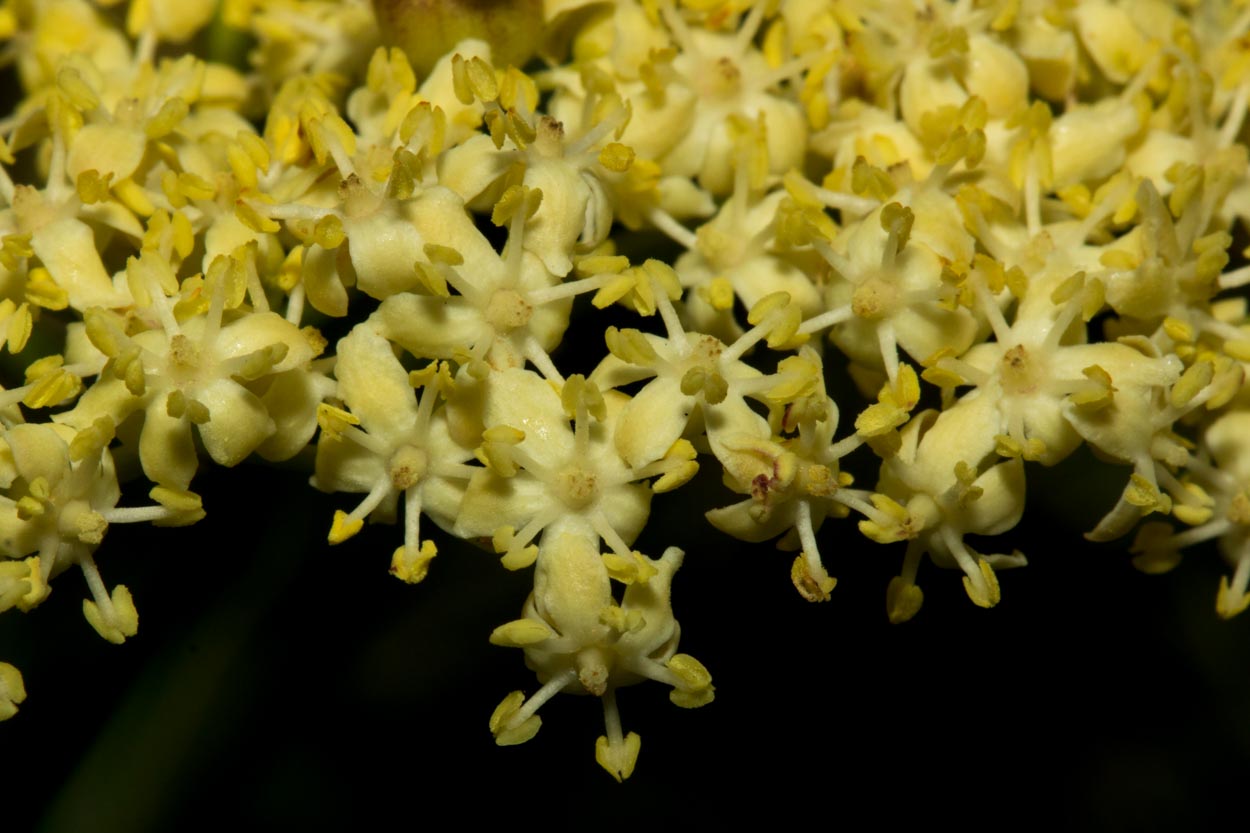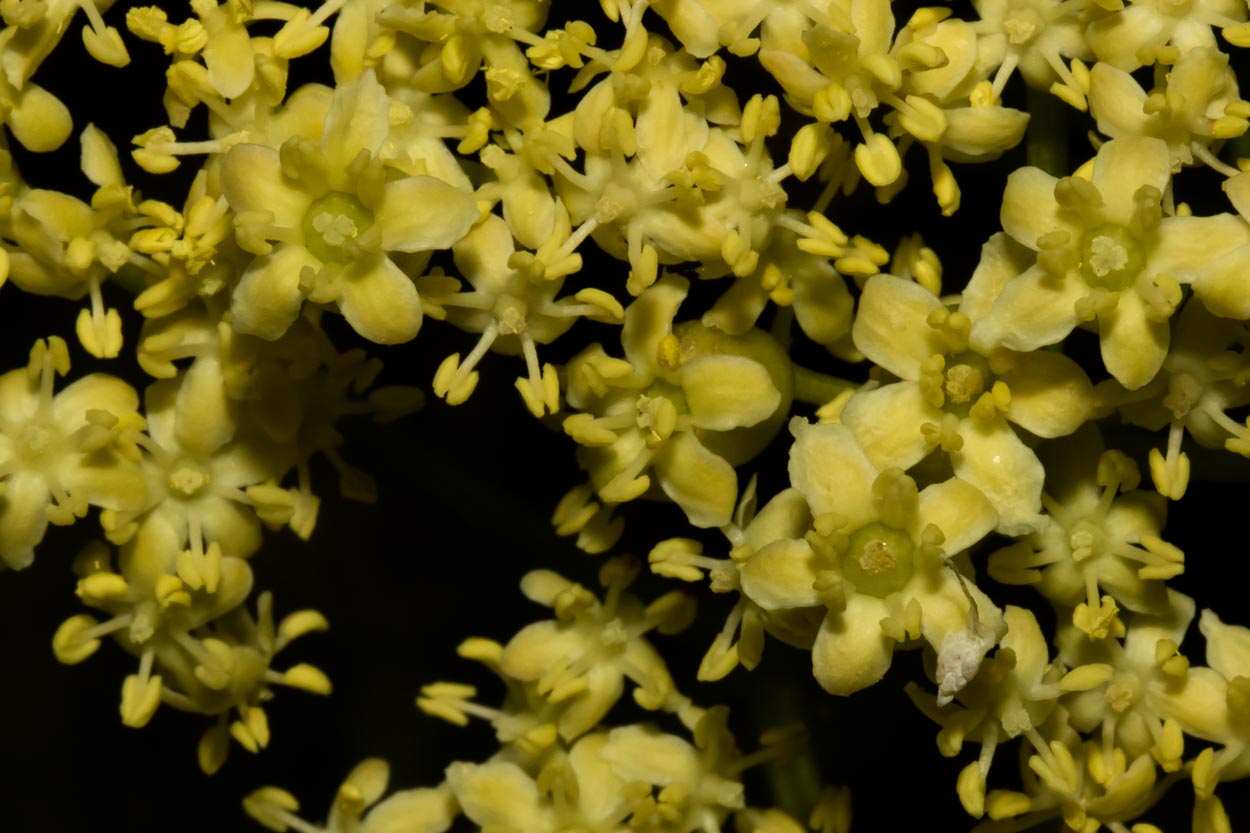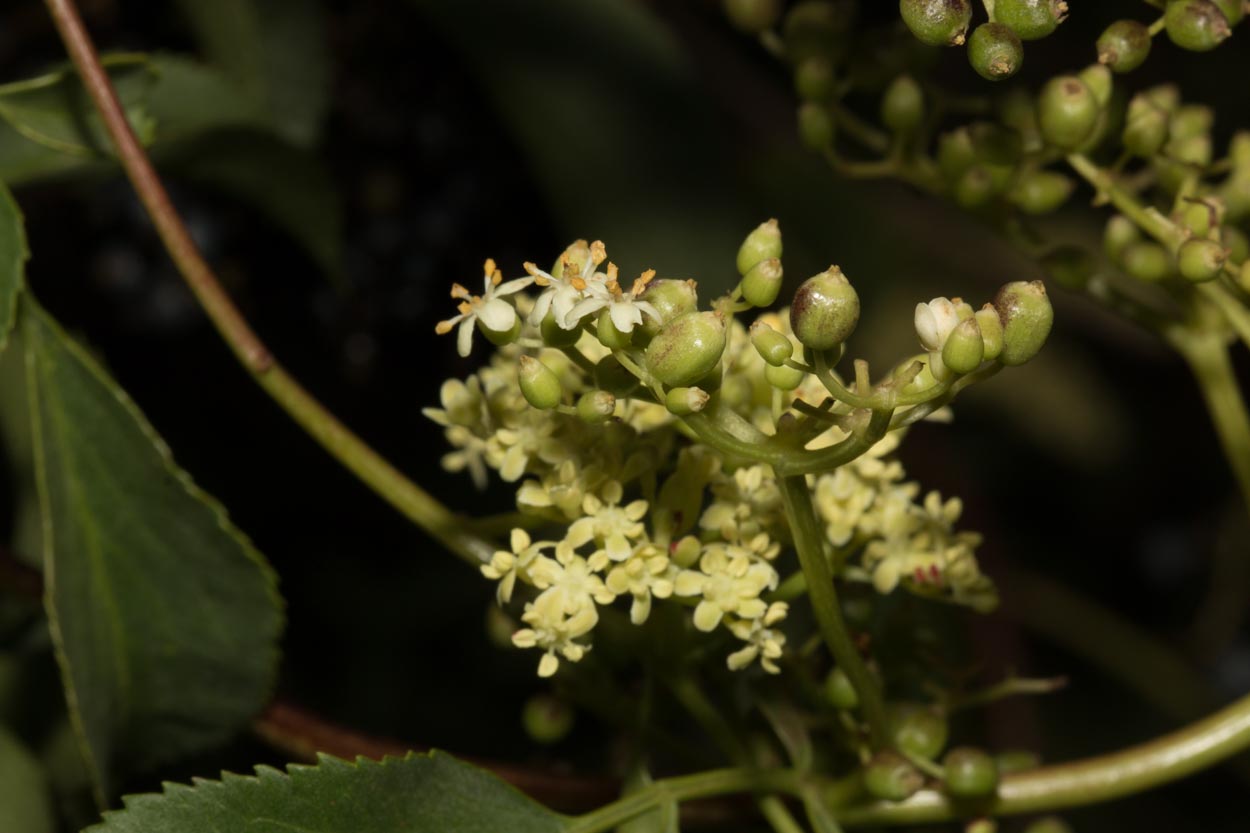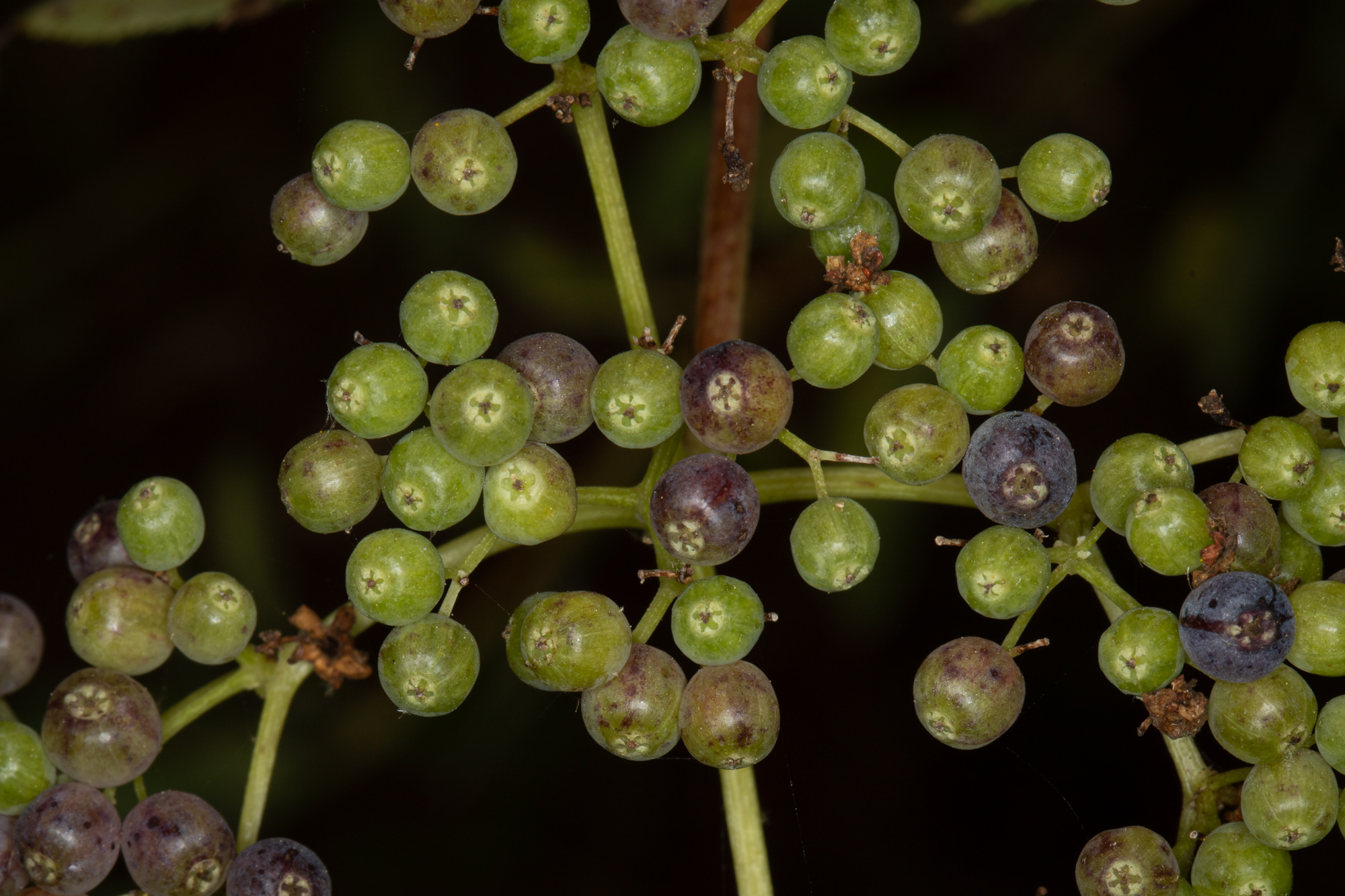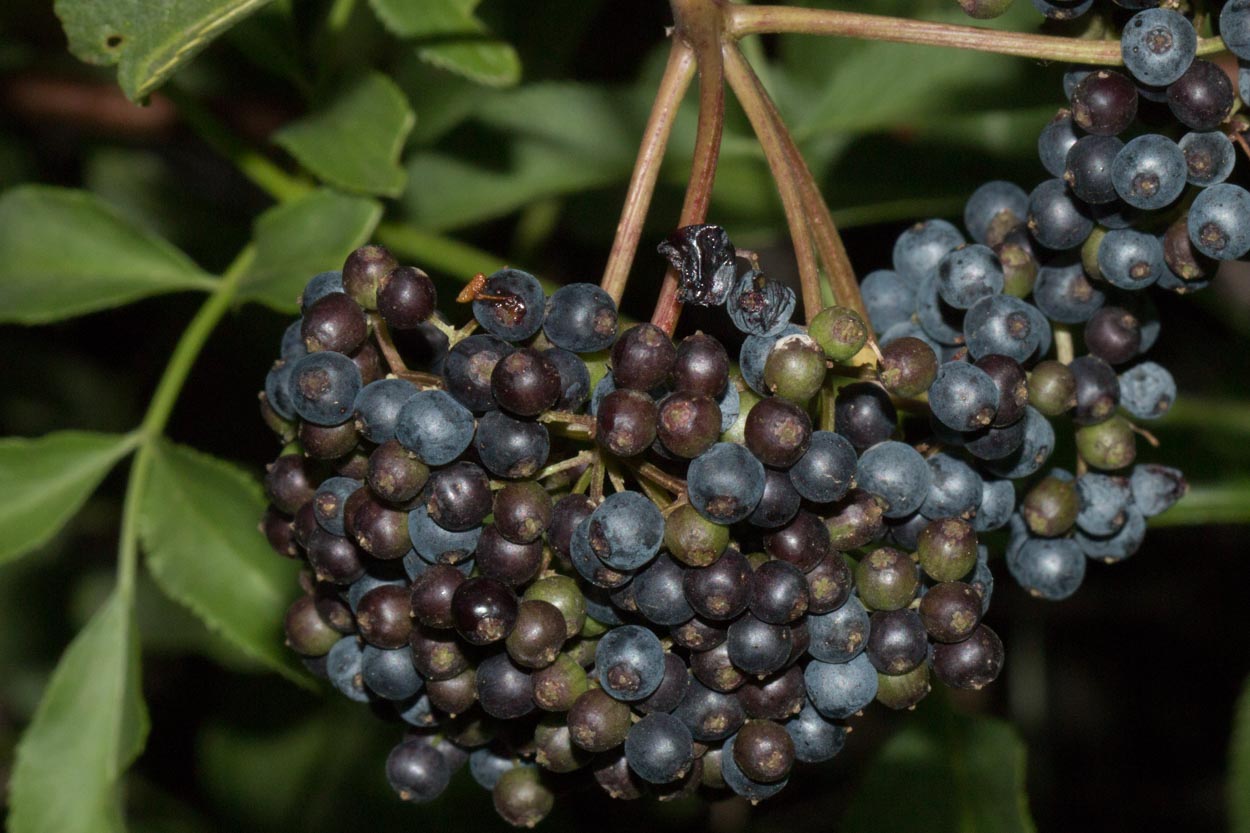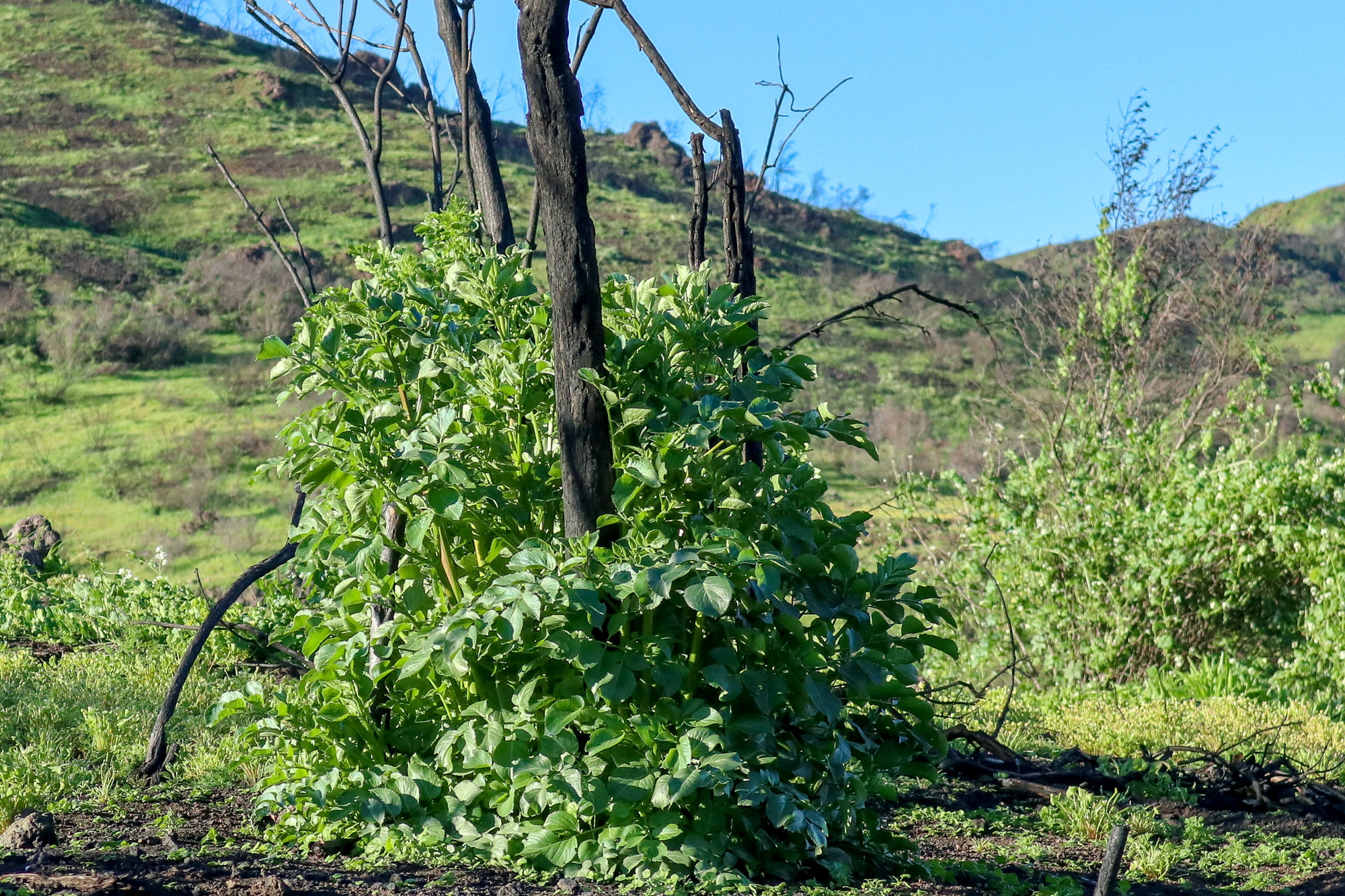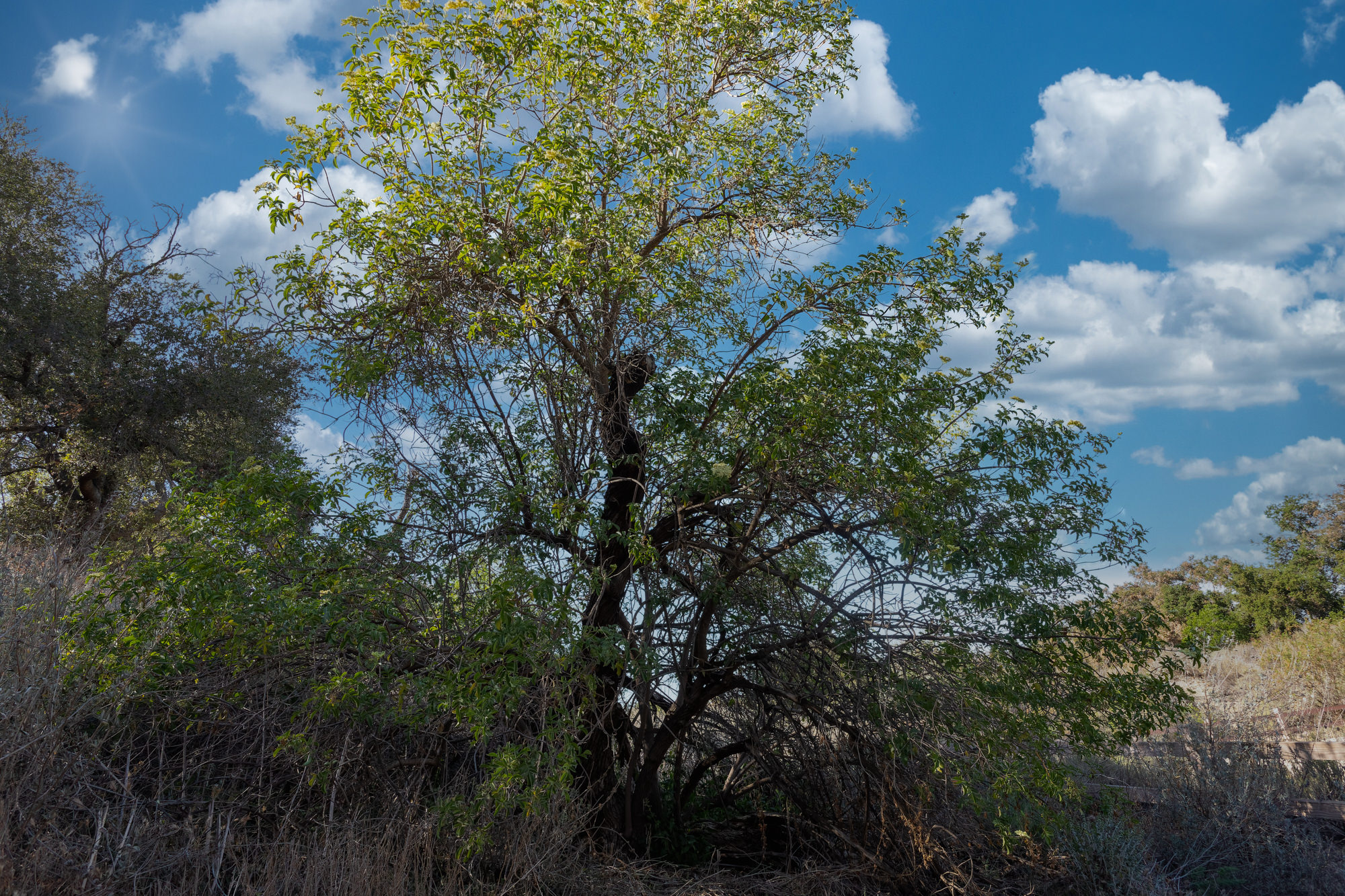Elderberry
- Sambucus nigra subsp. caerulea
| Common Name(s): | Elderberry |
| Scientific Name: | Sambucus nigra subsp. caerulea |
| Family: | Adoxaceae (Muskroot) |
| Plant Type: | Tree |
| Size: | up to 25 feet |
| Habitat: | woodlands, open areas and chaparral |
| Blooms: | April to August |
| Fire Response: | Stump Sprout or Seed |
Elderberry grows as a tree (sometimes as tall 20 feet in height) or as a shrub in the Oak Woodland plant community. The base of the plant is nearly always multi-trunked and the plant can spread as far wide as it is tall. Late spring, its showy blossoms will grab your attention. Tiny, creamy-white, 5-petalled flowers occur in flat-topped bunches from April to August. The bunches are up to 8 inches wide and can be seen from quite a distance. These blossoms become clusters of bluish-purple, edible berries in late summer. The pea-size berries that follow are used in making jams, pies and wine. Many kinds of birds flock to the fruit and bees frequent the flowers. The leaflets have toothed edges and are about 2 inches long, arranged on branches that are opposite and pinnately compound.
It is said that aside from the berries, the other parts of the plant are considered poisonous, and contact can cause certain discomforts such as nausea or worse. Nonetheless, native people did find a number of other uses. The flowers, when dried, made a tea for soothing fevers and flu, and were also applied to the skin to relieve itching or ease the pain of sprains. In addition to eating the berries, they were also used as dye. Roots, bark and leaves have diuretic properties. Roots and bark were also used to ease constipation. The branches and trunk were used to make bows, and in hollowing them out they formed a flute-like musical instrument. The species name Sambucus refers to a musical instrument called a sambuke.
Fire Response: Seeds have a hard protective coat. Fire breaks down the seed coat and allows for germination in long-buried seeds - the seeds can germinate after 15 years in the ground! The plant also vigorously sprouts from stump.
Contributed by Liz Baumann - revised by George Sherman
Last modified: May 16 2024 20:59:56.
Number of Images: 14
Image Size Total: 6,876,110
References:
Wildflowers of the Santa Monica Mountains, by Milt McAuleyFlowering Plants: The Santa Monica Mountains, Coastal and Chaparral Regions of Southern California, by Nancy Dale
Chumash Ethnobotany: Plant Knowledge Among the Chumash People, by Jan Timbrook
Leaf Shapes Primer - Botanical Terms for Leaves: - Link

